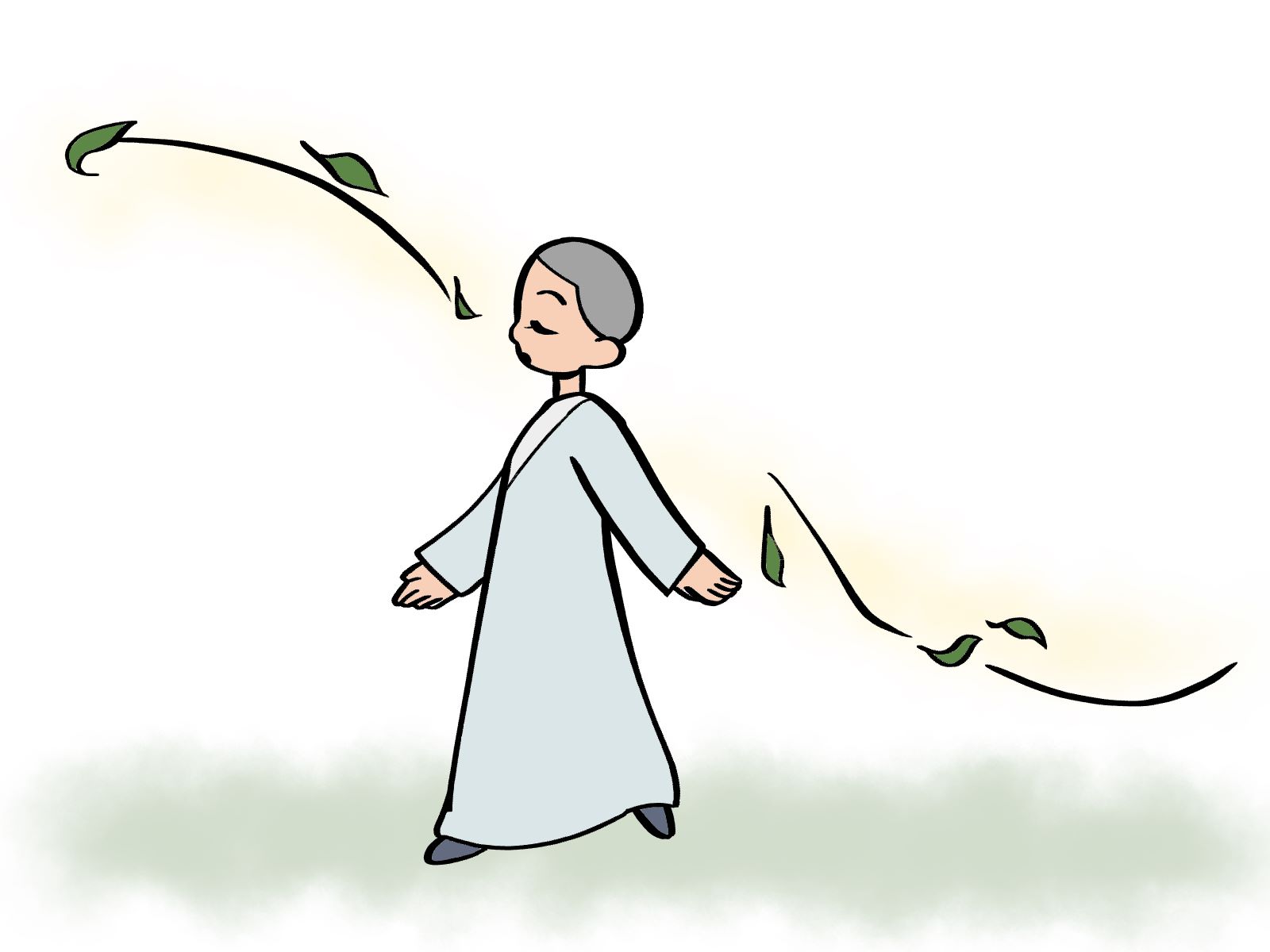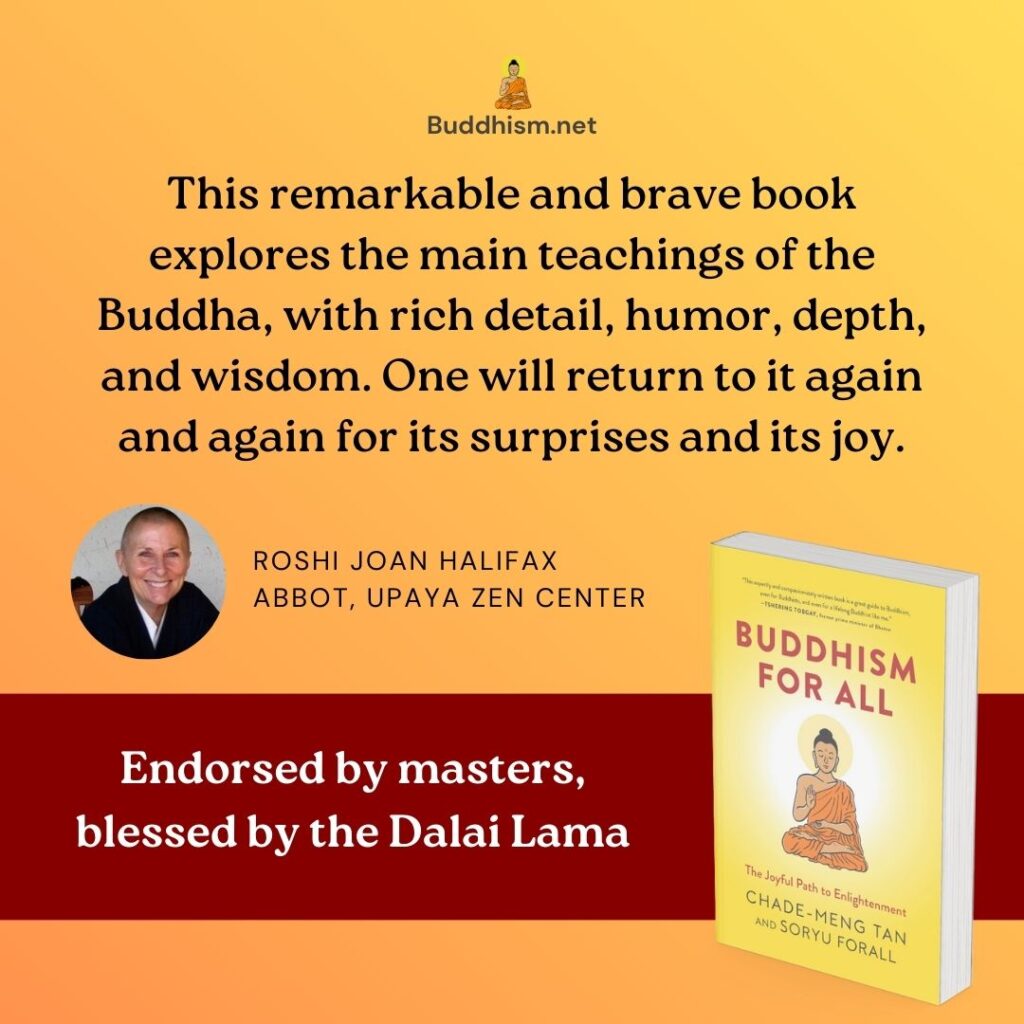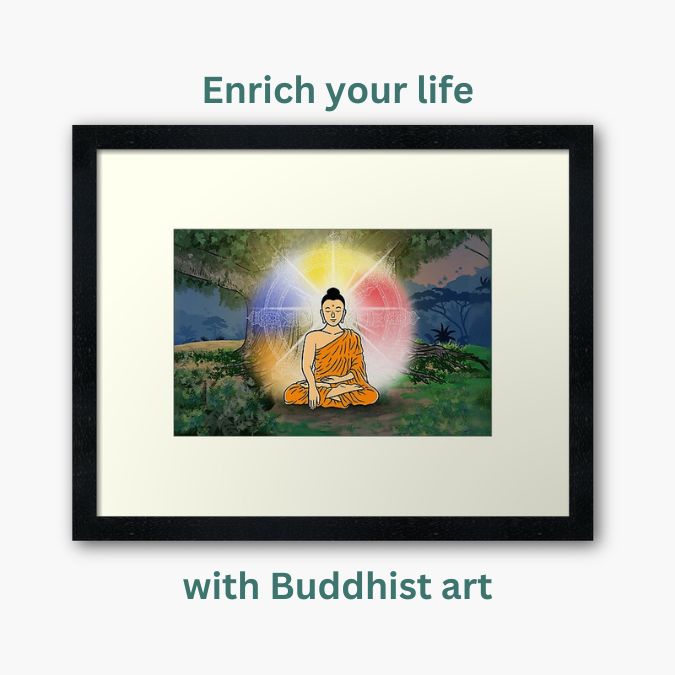
(Context: A journey to nirvana.)
Susan was a resident trainee, living and training with others full time, receiving teachings of the Dharma, living in a strict monastic routine, and meditating 5 to 15 hours per day depending on the schedule. Susan’s journey could be described in ten steps.
Step 1: Gaining early confidence and mundane right view.
At the start of Susan’s heroic journey, she appeared quite unheroic. Well, “annoying” might be a better descriptor. Soon after she arrived, she started trying to fix others, occasionally in anger. For example, she told others that they weren’t doing enough with their lives, that they should label food differently, mop the floor with more mindfulness, be more considerate of her feelings. Yet, her behavior was seen as somewhat endearing by the community. Why? Because such behavior is normal for beginners: they have enough self-confidence to aspire for enlightenment, but not yet enough to actually strive to that end, so they try to fix others instead. Fixing others requires less self-confidence than cultivating one’s own mind. What she needed was to develop that self-confidence.
She needed to cultivate positive inner states, and positive outer behavioral patterns. She began by working on her own behavior because, as we have seen during our discussion on virtue, behavior is the objective aspect of the mind, so she could use it to measure her progress. This meant embarking on a continuous struggle to live ethically, dealing with gross personality issues, and deepening her skillful relationships. This was supported by, and led to, understanding mundane right view. Therefore, she started to gain the confidence to be willing to struggle with her own mind.
Practicing this way offered her a realization that initially shocked and dismayed her: that karma does not take a break. She realized that every action, every word, every thought, has consequences, so her virtue must never take a break either. The good news is that soon enough, she started to enjoy the struggle, like an athlete who enjoys playing against people with superior ability, or a software engineer who enjoys the challenge of a difficult problem. She realized that this struggle to deepen one’s virtue can be fun, a fun that leads to the ease of self-confidence. This simple sentence summarizes her transformation that occurred in this stage. Better still, that type of self-confidence is one with humility. From then on, her practice became more fulfilling and enjoyable.
You might wonder why she couldn’t do this before. The main thing she did not have before was the community. A monastic setting provides a community that creates the right conditions to support the trainees in (a) living in compassionate relationship with all living things, and (b) accepting the importance of every small thing we do. That provided fertile grounds for accelerated spiritual growth.
Pretty soon, Susan’s confidence grew into a magnificent aspiration for enlightenment out of compassion for all. That changed everything.
Step 2: Becoming skillful at basic mindfulness by making it physical.
It did not take long for Susan to discover that she needed more than this initial confidence. She saw that however hard she might try to make herself kind and conscientious, underlying tendencies in her mind took over in every moment that lacked mindfulness. These were, to be blunt, pretty common. The only solution was to strengthen her mindfulness. Realizing that, sitting meditation made increasing sense to her.
Fortunately, at about the same time, a shift happened in her attitude towards meditation that may appear small but is actually very significant: she stopped seeing meditation as a way to get a big experience. Instead, she approached it as a way to purify and cultivate her mind. Surprisingly, it wasn’t as fun at first, but she soon learned why. As long as she still held onto a consumer mindset, thinking that meditation is like a price we pay for marvelous experiences, meditation done correctly is not fun. Once she uprooted that view, every meditation session was exciting. Hours of sitting were no longer the price to be paid, but were like the path up a mountain, which is enjoyable and beautiful in its own right. Because of this, she no longer tried to make the price as low as possible, but instead tried to make it as high as possible. Why? Because there is nothing in the entire world better than this path. The path of letting go is more joyful than anything in the world. There is only one thing more joyful, and that is beyond the world.
What most surprised her in this step was the fact that the best way to purify her mind was to make meditation completely physical. The beginning of this was the ability to use walking, eating, chores, and other bodily activities as the foundation of mindfulness. Soon enough, mindfulness became even more concrete, as she learned to control her mind by keeping it on the breath. She learned to keep her mind focused whether it liked it or not. She realized she liked it. The fact that she liked it while her mind did not was early evidence that she was not her mind.
Furthermore, because her mind was following her breath, her breath began to control her mind, rather than the other way round. She was astonished to discover that her breath already knew how to be relaxed and energetic, and self-conscious awareness was not needed to force it to be that way. The breath was playful and had a great understanding of the best way forward. In this way, she learned to perfect the posture, feel the sensations in the body relating to the breath, calm the body with the breath, energize the body with the breath, and practice full mindfulness of the body.
Step 3: Beginning to overcome the hindrances to wisdom.
Susan now felt she was getting “really good” at meditation. In the previous step, the five hindrances were already beginning to break down for her. But now, she was much more skillful: her breath itself could purify her mind of the hindrances. More impressively, that process kept working whenever she was breathing (which is to say, all day long) and not only when she was doing formal meditation.
But wait, there was even more. She was not only purifying her mind of the hindrances; she was also cultivating their positive counterparts.
(a) She used her breath to purify sensual desire, and then continued that process until she could abide in the aspiration to relinquish birth and death.
(b) She purified any ill will she had towards anyone at all (including herself) and then found, where she least expected it, compassion for all beings.
(c) She purified the habit of being stuck in ruts, and, bursting out of that exhausting state, found a new and endless energy throughout her body.
(d) She finally, after years of helpless slavery to anxiety, was able to let it go and settle into a deep faith, a trust in this moment, which allowed her to enjoy the challenge this unique moment offers.
And (e) her confusion about the practice melted away, because she found the confidence to reveal her deepest doubts to her teacher, and once these were resolved, she had the confidence to put her understanding into practice.
This step reached maturity when Susan realized that freedom from the hindrances is more rewarding than anything they have to offer. The unhindered mind, in its natural state, is joyful. Susan was now able to access this inner joy some of the time. Because of that inner joy, she could now clearly experience for herself that not having a sensual desire to fulfill is far more joyful than fulfilling it (see: the leper analogy here). She also saw clearly how awful wanting is, and that the reason fulfilling sensual desire feels so pleasurable is merely that the wanting vanishes for a little while. Not having the wanting to begin with is even more pleasurable. Since she could get rid of want at will, she could feel happy at will. Having so much more inner joy available, she could relax and let that joy draw her on without being internally divided.
She slowly worked through the other hindrances as well. In her particular case, the most confusing of these five was worry. She was deeply convinced that if one is not worried, one is not compassionate. She had previously felt that being worried about someone or some issue is proof that you care. This had been a primary reason for addictive behaviors in her life, since she craved a break from the constant worry that she felt an obligation to maintain. When she finally saw how faith is a greater source of compassion than worry, she escaped great pain, like going through the excruciating process of escaping from of an abusive relationship. And once she did, her face glowed and shone, from the inside, like a lamp.
Right around this point, Susan also started gaining a meaningful level of mastery over her emotions. For example, more than half the time, she found herself able to dissipate her anger the moment it arose. The Buddha had a profoundly beautiful analogy, he describes it as like writing on water[1]: the moment it is written, it disappears. This completely changed her relationships, as she no longer felt a need to argue with other people about whether they labelled food properly.
This was liberating and joyful, almost like magic. Better still, others went from fearing her and doing what she said despite resistance, to loving her and doing what she said due to admiration. One side benefit: the food now got labelled correctly.
Many meditators, upon reaching this step, feel that their lives have been profoundly changed in ways they did not even think was possible just a few months ago. Susan was no exception. She felt like Helena when she defeated all those pirate fleets and demons: invincible. But remember, this is only Step 3 of 10. What could possibly go wrong?
Activities
- Reflect on this post with Angela:
- Right view is the first component of the Noble Eightfold Path. The Buddhist right view is based on knowing the nature of suffering, the causes of suffering, the nature of liberation from suffering, and the path to liberation from suffering. How would you know you have right view? Why is having right view important?
- Using daily activities like walking, eating, doing chores etc as the foundation of mindfulness is an excellent foundation because it is direct and immediate, in the here and now. In fact, “mindfulness of the body” is one of the four foundations of mindfulness. Examine your life. How can you practice mindfulness of the body, here and now?
- Referencing Aṅguttara Nikāya 1.575, “Bhikkhus, even as one who encompasses with his mind the great ocean includes thereby all of the streams that run into the ocean, just so, whoever develops and cultivates mindfulness directed to the body includes all wholesome qualities that pertain to true knowledge”, we realize that mindfulness of the body is very important. Do you agree?
- Tip: Visit our Guided Meditation page to start with our curated list of guided meditations to start practicing mindfulness of the body.
- What stood out to you from this article? Why?
References
[1] Aṅguttara Nikāya 3.132. This is my favorite of all the Buddha’s analogies.
Featured image by Natalie Tsang.


